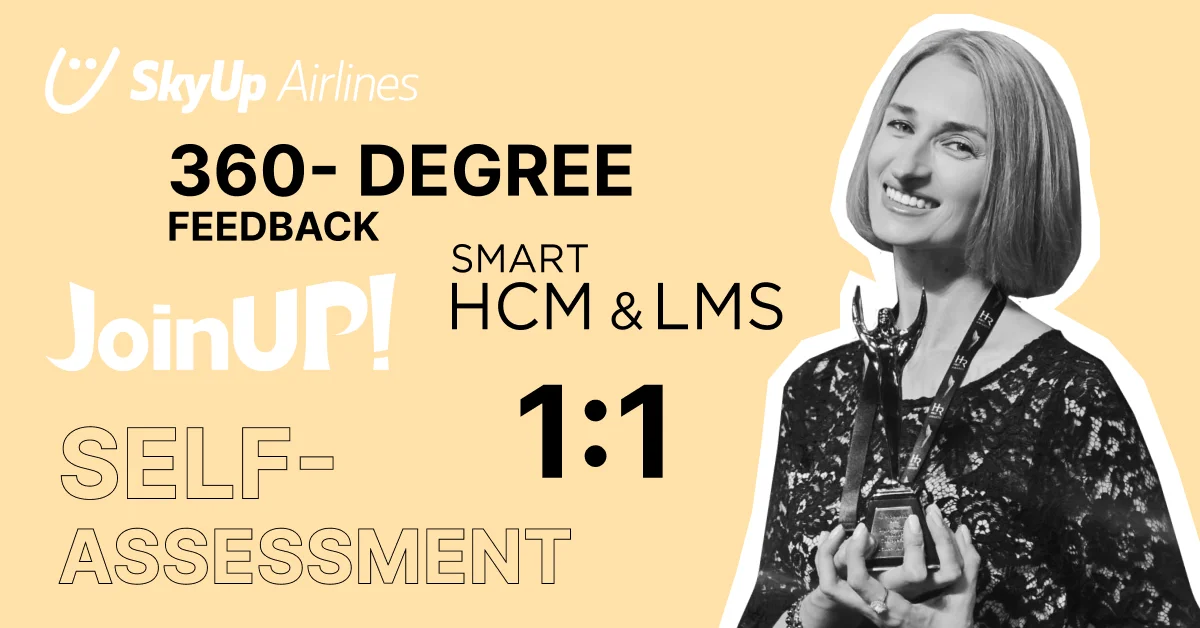The leaders of every successful organization understand that people are their most valuable asset. In today’s increasingly competitive business environment, strategic human resource (HR) management is becoming an integral part of success. The HR department is not exclusively an administrative department any more but plays an important role in strategic planning and implementation of business processes.
Based on the results of the 75th SHRM conference in Vegas, HR PRO Association representatives held an online meeting where they collected the most relevant information and shared fresh insights from the international event on global trends in personnel management, the transformation of the role of the HR manager, the development of an inclusive environment, talent retention, and the impact of AI on recruiting.
#1 The role of the HR manager as a strategist and leader of the company
According to the experts of the SHRM conference, the transformation of the role of HR in 2023 has acquired a more global format, namely, the transition of an HR specialist from a support function to a strategic HR leader who can and should develop a global mindset, develop as a professional, improve skills, operate with numbers, work with data and analytics.
According to a survey of employees of international companies, the level of perception of HR as an important function in the work of the company has increased by 16% over the past 2 years, but this figure is still less than half:
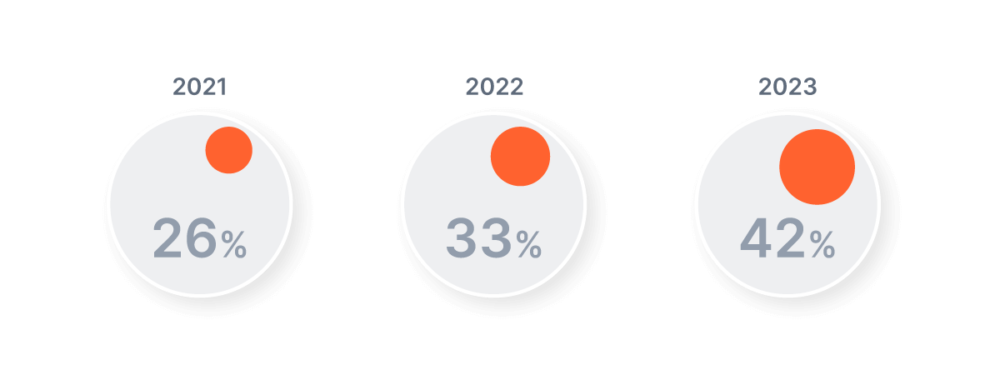
The key aspects leading to the success of an HR leader will be:
- Knowledge of global trends in HR management;
- Identification of 5 strategic priorities and the ability to update them as needed;
- Scaling one’s influence on management processes in the company.
According to the US research, the influence of the voice of HR can increase the profitability of a company by 5.5 times and increase the level of innovation in a company by 6 times.
Vivian Blade’s 5 strategic priorities of an HR leader for 2023:
- Be inquisitive;
- Be a strategist;
- Be visible and participate in business processes;
- Communicate your value;
- Measure your impact.
To develop their value and emphasize their strategic role to the top management of the company, HR managers must be business-oriented, know the metrics for assessing the economic efficiency of human resources, and also predict trends in the labor market. Digital competence allows HR to innovate in the processes of recruitment, training, evaluation and motivation of personnel.
#2 The role of automation and AI in optimizing HR processes
Automation and artificial intelligence are no longer just a new reality, but an integral part of business process optimization. And our task today will be to learn how to use these technologies correctly in order to simplify and improve workflows. A company that has a reporting and analysis process built and has 24/7 support will be 100% efficient. Therefore, everything that can be automated should be automated.
In the context of a large shortage of labor, companies need to respond as quickly as possible and, above all, automate processes tied to people, and use artificial intelligence to at least partially cover the existing shortage of personnel.
The modern HR leader must be the initiator of such innovations and be able to use them as an assistant, which will help use their time more efficiently and focus on more important strategic tasks. Studies have shown that the use of AI in HR processes reduces time on routine tasks by 85% and increases productivity by the same amount.
Using AI in recruiting processes (according to the SHRM 2022 research):

- 69% communication with candidates
- 64% resume screening
- 52% search for candidates
- 42% posting vacancies
For example, using the sidebar of Microsoft’s Bing AI chatbot, you can automate the process of communicating with a candidate at all stages of interaction with him or her by setting appropriate requests that will generate ready-to-use official or private emails. In the settings, you can choose the tone of communication, the format of the message for the relevant communication channel, and the length of the text.
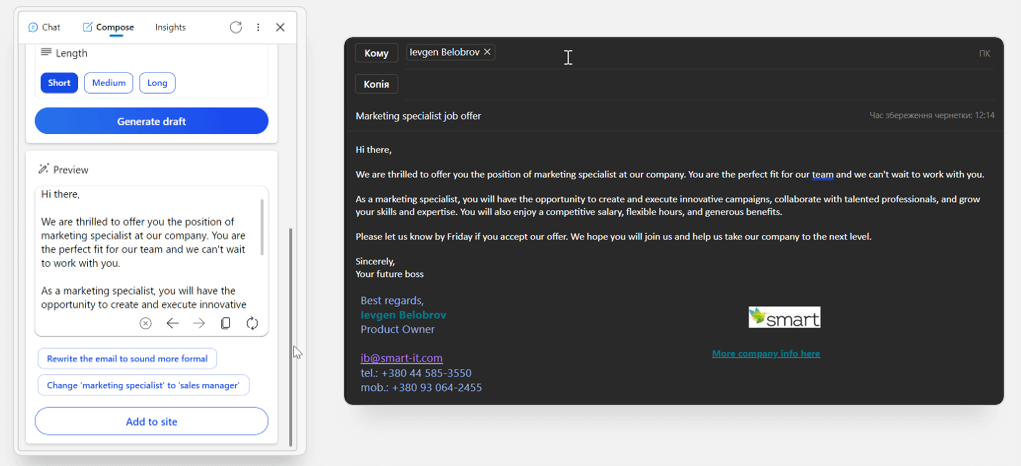
However, it should be understood that the benefit of using AI directly depends on how we articulate the prompt and what input data is used.
An in-depth study of the specifics of working with requests to artificial intelligence can result in covering the following complex HR tasks:
- Modelling training plans;
- Predicting future development plans;
- Forecasting staff churn.
Here appears a demand for a job of the future, a Prompt Engineer, whose main goal is to create and train artificial intelligence to respond to requests, add information that it will update and analyze.
However, the issue of regulating the ethics and appropriateness of using people’s personal data for AI at the legislative level remains open.
#3 Inclusion, diversity – mixed formats, people
The terms diversity and inclusion refer to practices and strategies aimed at creating a diverse work environment. An environment where people are not afraid to be themselves, express themselves and be heard, without fear of condemnation, which in turn unleashes their full potential and talents.
Diversity includes the following aspects:
- Gender equality;
- Race and ethnicity;
- Age structure;
- Nationality and other distinguishing.
That is, creating an environment in which an employee will feel free and comfortable, taking into account personal differences and needs.
An inclusive environment is one where different people feel totally accepted, respect each other and can contribute on equal terms.
An inclusive culture engages an employee in creating conditions for the development of their potential, awareness of their equal participation in decision-making and access to company resources and professional growth.
Why businesses should pay attention to the development of an inclusive culture and diversity.
Firstly, the team is culturally enriched, and secondly, the workflow is improving, which will stimulate an increase in the performance of employees.
Checklist that measures inclusion:
How to organize everything correctly in such a case:
- First of all, it is necessary to develop and maintain a policy of diversity and inclusion, which will include specific provisions on non-discrimination, equality of opportunity, understanding and respect for various individual characteristics. And then the HR manager needs to put in place procedures to ensure that these policies are followed in all aspects of the organization, regardless of the age, gender, or religious affiliation of employees.
- Introducing learning programs and trainings on awareness of stereotypes, multiculturalism, communication skills and cultural competence for all employees.
- Creating and developing an inclusive culture with equal representation of workers regardless of their gender and identity. And also applying the principle of open communication and involving teams to work together on a project for maximum effectiveness.
To sum up, the introduction of an inclusive culture is a process, not an end goal, and it requires constant development and support from the HR leader.
#4 Developing and retaining talent in a new scenario
Assessment of potential and talent development planning should take place according to the new employee lifecycle that has significantly reduced. For example, in contrast to baby boomers and their willingness to devote 8+ years to work in one company, Gen Z representatives are less loyal: their work cycle is 1–2 years.
According to Vivian Blade’s updated lifecycle, among the main components, special attention should be paid to such stages as Contribute, where the employee is aware of their influence on the process and the result for the company, and Champion, that is, the conditions in which their value is noted.
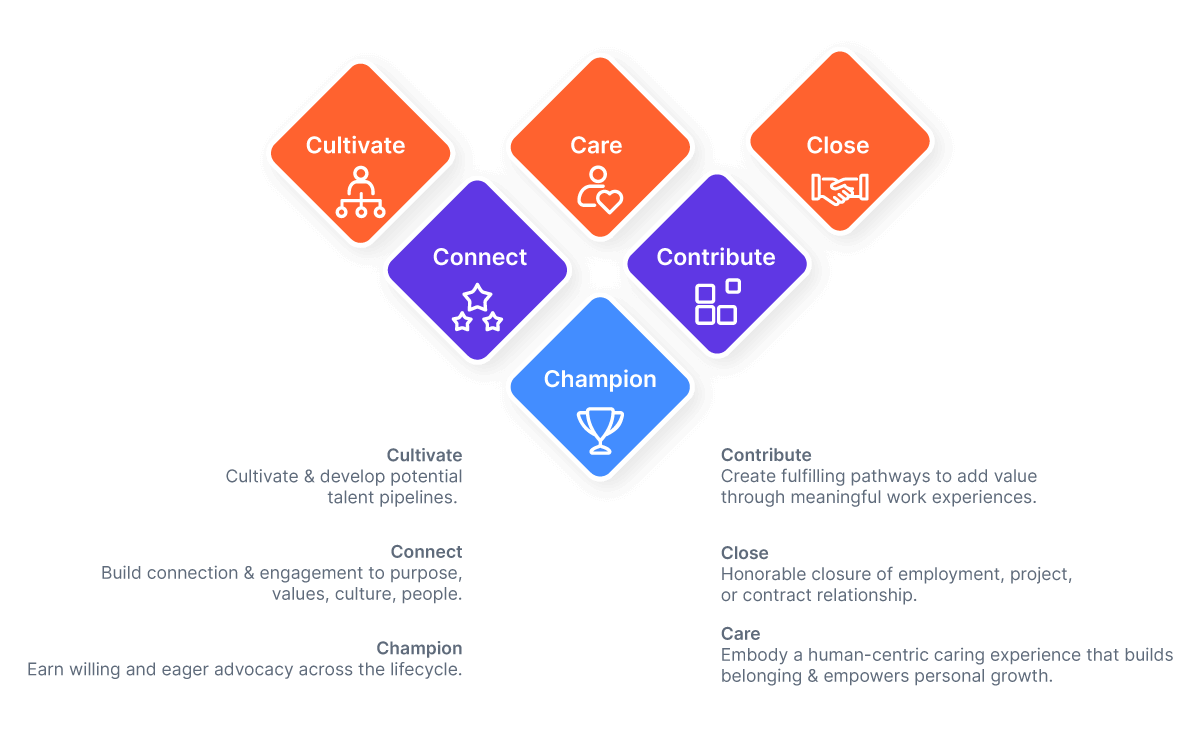
The right level of managerial skills should also be considered in terms of talent retention, as toxic culture is the most common reason for quitting according to MIT research. In particular, 60% of layoffs are caused by poor management, 63% are due to both low wages and lack of development opportunities.
Candidates are ready to give preference to an employer who will share their values and meet their expectations. Therefore, here the focus of the HR leader should be responsiveness to the wishes of the candidate and creating conditions for development. For example, organizing trainings and professional webinars will have a positive impact on employee engagement.
#5 Mental health – hustle culture, workload, post-COVID, martial law
Mental health refers to a favorable emotional state of an employee, in which their work will be as productive and effective for the company as possible. There are a lot of factors that influence the support of mental health: from a comfortable onboarding process to the regulation of work-life balance.
According to HR managers, 44% of employees noted that it is the hybrid format of work and online that helps them maintain work-life balance, however, 82% of Americans say that they are more productive in the office.
Therefore, experts advise to focus on the development and implementation of technologies, training people to use them in order to ensure full-fledged communication between employees and maintain their productivity in a remote work environment.
In American companies, there are practices where employees, using a special system, must book time for coffee online or offline if they work in the office, and talk about any general non-work topics. Such a conversation can take from 15 to 45 minutes. The peculiarity of such a system is that each time you need to choose a new interlocutor.
An auxiliary tool for maintaining mental health will be the introduction of psychotherapy sessions. Moreover, top management and colleagues having such an experience are the ones to set the trend and justify the importance of such sessions, showing how this helps and improves the emotional state.
Even the things as simple as the ability to take time off in case of feeling sick or mental fatigue will make it possible to get back on emotional track and be more focused on work-related processes.
COVID and the post-COVID syndrome are not the last challenges that we had to face, and we, Ukrainians, know this too well. In a state of war, the next priority task for the HR department will be to work with the consequences, such as anxiety and distorted perception of reality, that have affected the mental health of both civilian employees and demobilized ones.
Conclusions
The HR department has long gone beyond the role of support staff or administrator, so an HR manager today is the leader strategist in an organization where the business must consult HRs and take their opinions on board when planning and setting goals.
The development of culture and leadership requires new approaches, where the tasks of the HR manager should be:
- Business orientation;
- Developing the effectiveness of company leaders and retaining talent;
- Reviewing the role in a specific vacancy, work and working environment quality;
- Talent lifecycle – changing expectations;
- Organizational resilience and flexibility.
The path to success for an HR manager is to develop personal leadership skills, collect and analyze data, keep abreast of all global trends, constantly develop, train staff, be the initiator of the implementation of technological solutions and train staff in their use.
Here is a list of references recommended by the speakers:
- Rethinking Retention in Good Times and Bad: Breakthrough Ideas for Keeping your Best Workers
- The Empathy Advantage
- The Stay Interview: A Manager’s Guide to Keeping the Best and Brightest
- Resilience Ready: The Leader’s Guide to Thriving Through Unrelenting Crises
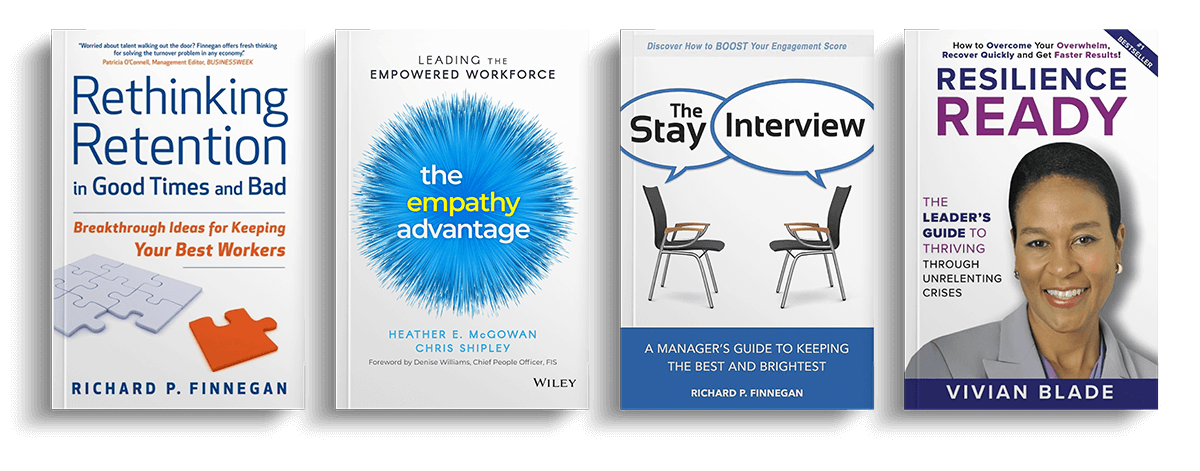
It is close interaction with clients, leading HR experts in the European market and advanced Microsoft technologies that helps us create and develop solutions that are convenient for modern companies. To build a complete HR ecosystem, taking into account global trends and changing market realities.
Subscribe to our social media channels and be the first to learn about the latest news and trends in HR management.



